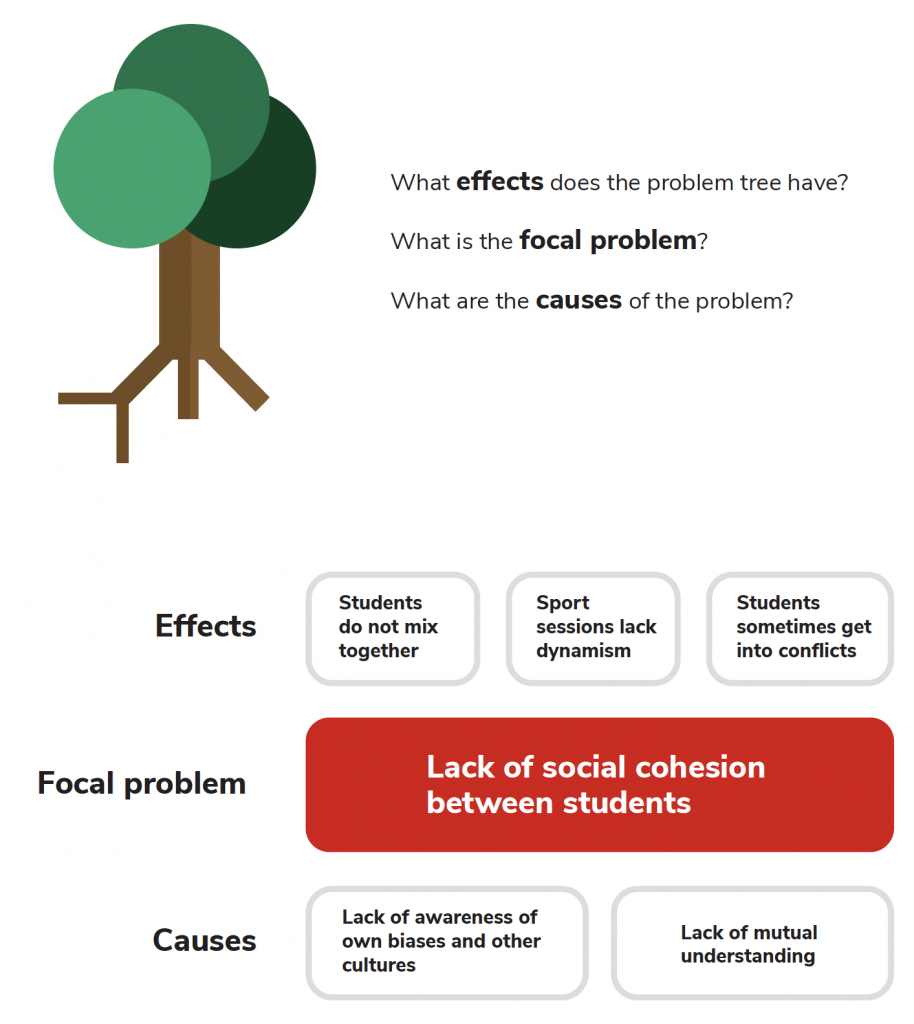Before being able to successfully define what to measure, it is important to understand the specific problem that is being addressed. There are many methods to map out a problem, its causes, its effects, and potential solutions, and these methods will help significantly clarify goals and further define measurable indicators for subsequent M&E activities.
One potential method to map out a problem and determine potential solutions – and therefore indicators – is known as a Problem Tree. Indeed, this method is not only useful for developing M&E approaches, but for planning a series of sessions or broader program, as discussed in Unit 3.
The problem tree is a method to map core problems, along with their causes and effects, which in turn can help identify clear and manageable objectives for a given intervention. A problem tree is broken down into three parts: a trunk, roots, and branches. The trunk is the core problem. The roots represent the causes of the core problem and the branches represent its effects. Problem trees are typically developed in a group exercise to make sure that various perspectives and backgrounds are considered before launching, and monitoring, a program of sessions or lessons.
